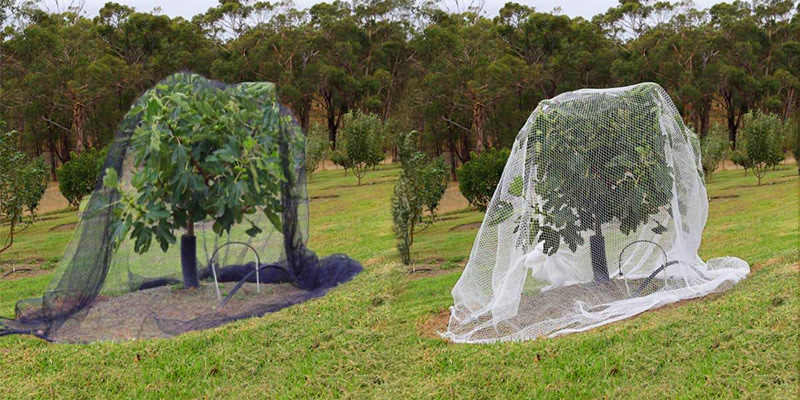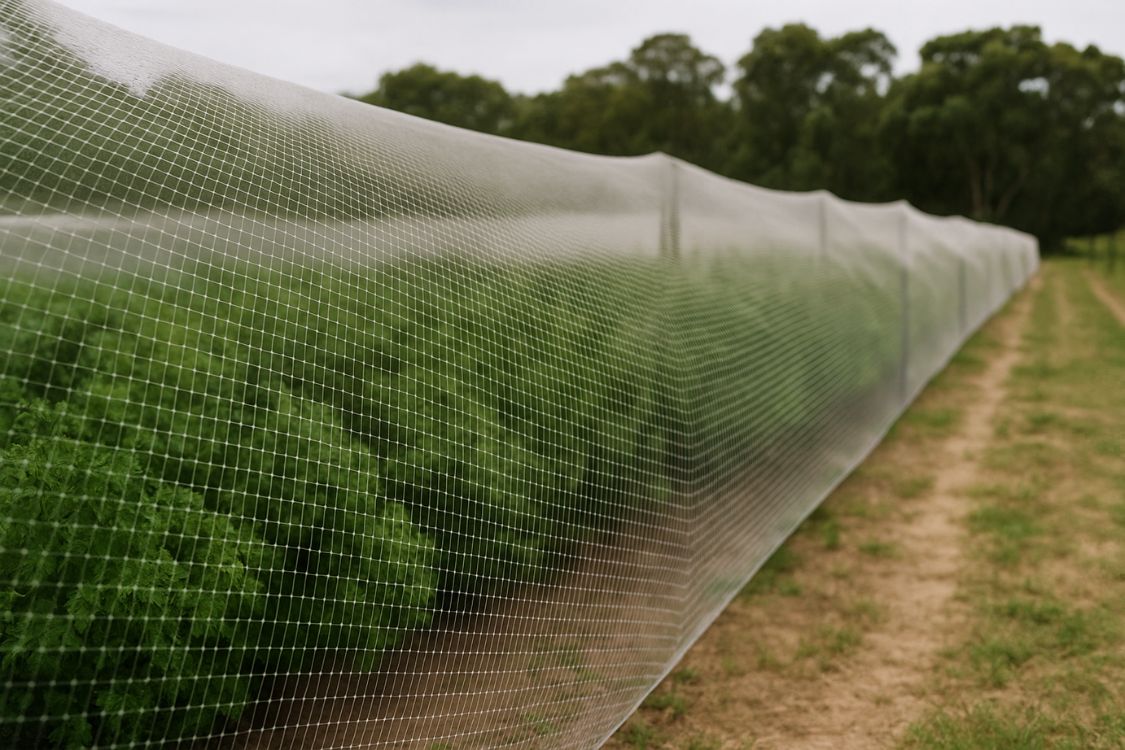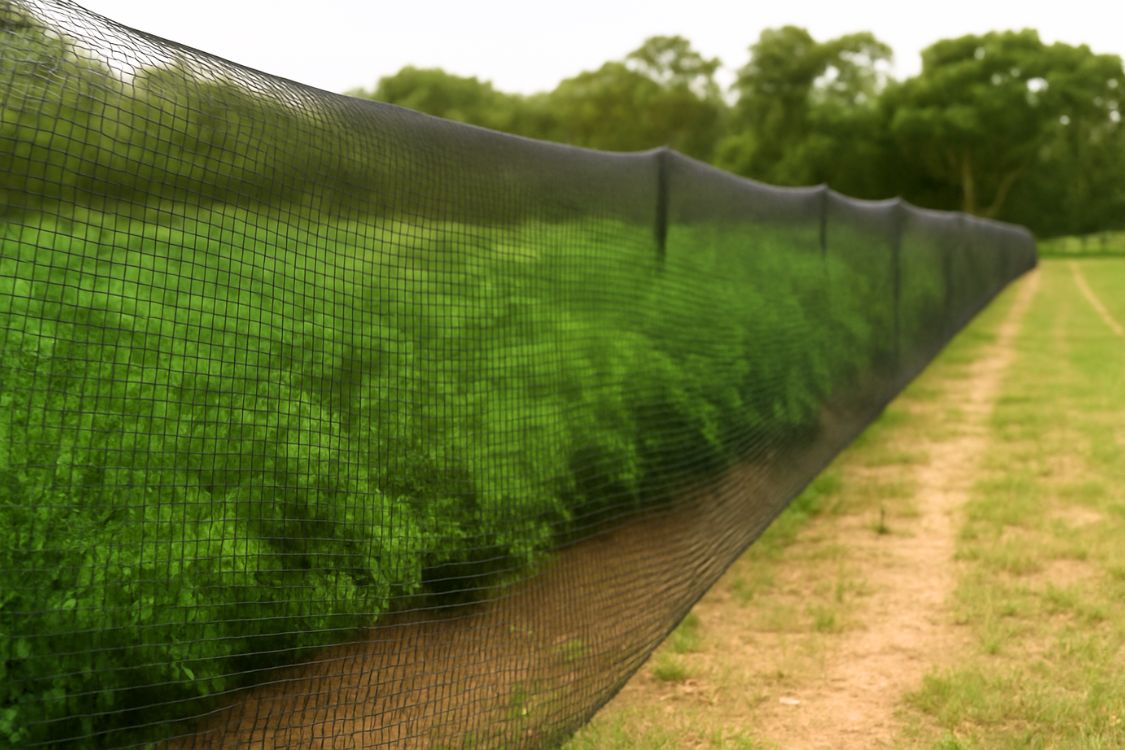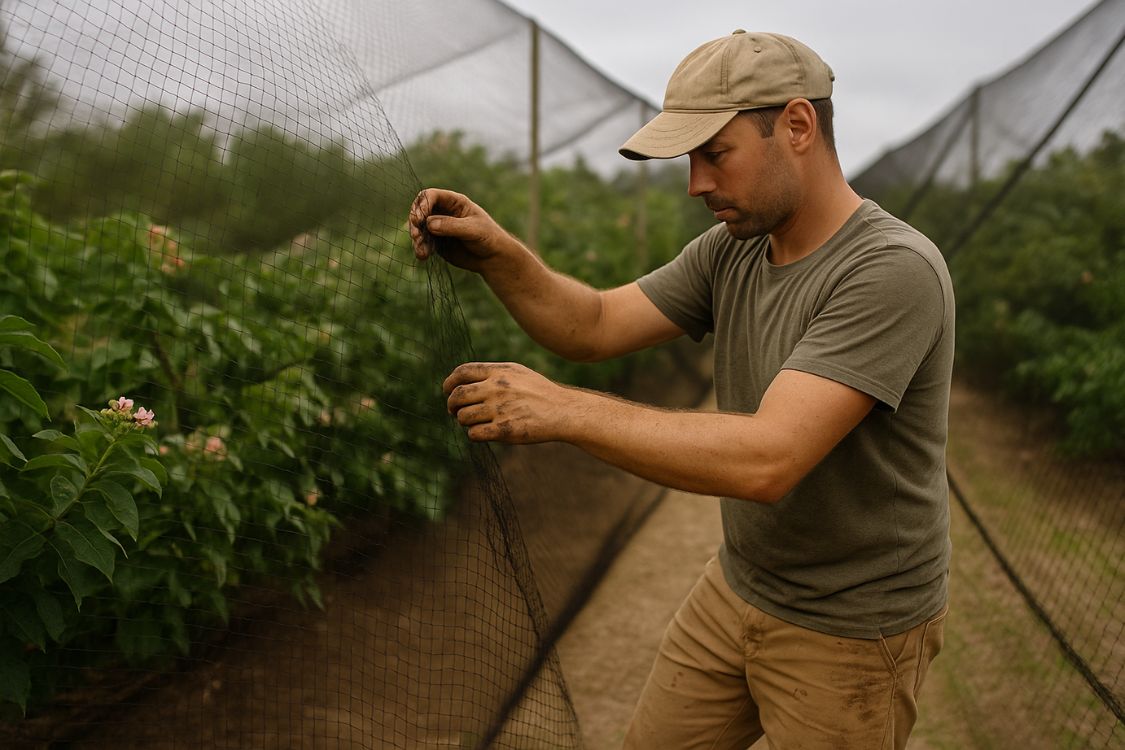Bird netting is an essential tool for gardeners and farmers looking to protect their plants, fruit, and vegetables from birds and other pests.
One common question that arises when choosing bird netting is, “Which colour is better, white or black?”

Both white and black bird netting have unique advantages, and understanding these can help you make the best choice for your garden’s specific needs.
In this blog, we’ll explore the differences between white and black bird netting to help you decide which is right for your garden or orchard.
Visibility and Deterrence
White Bird Netting: White netting is highly visible, both to humans and to birds. This visibility can act as a deterrent, as birds are more likely to spot the netting from a distance and avoid flying into it. This can reduce accidental entanglements and may be beneficial in high-traffic bird areas where you want to deter them without causing harm.

Black Bird Netting: Black netting is less visible than white netting, which may be an advantage if you prefer a more discreet appearance in your garden. However, its lower visibility could increase the chances of birds flying into it, though this risk is generally minimal if the netting is properly installed and tensioned.

UV Stability and Durability
White Bird Netting: White netting is very UV-resistant. In very sunny climates, this UV resistance can make a difference in the netting’s lifespan.
Black Bird Netting: Black netting also offers good UV resistance. High-quality black netting can last for years, making it a reliable option for many gardens.
Temperature Impact
White Bird Netting: White netting reflects more sunlight, which can help in keeping the areas underneath it slightly cooler. This is particularly useful if you’re growing temperature-sensitive plants or if your garden is in an area with very high temperatures. White netting can contribute to a cooler environment, protecting your crops from overheating.
Black Bird Netting: Black netting absorbs more heat than white netting. For plants that can handle a bit of warmth, this additional heat retention can actually support growth in cooler climates or during colder seasons. However, in very hot climates, it may slightly raise temperatures around plants.
Aesthetics and Garden Integration
White Bird Netting: White netting is more visible and may stand out against green plants and foliage. While this visibility is helpful for birds, some gardeners find that it distracts from the natural beauty of the garden landscape. However, if you don’t mind the look, it’s a highly effective choice.
Black Bird Netting: Black netting tends to blend more seamlessly into a garden environment, making it less noticeable. If aesthetics are a primary concern, black netting may be preferable as it provides a more natural look without drawing attention.
Practical Considerations
Ease of Installation: Both white and black bird netting are generally easy to install, but white netting’s visibility can make it easier to see while installing, especially in low-light conditions.

Cost: The price difference between white and black bird netting is usually minimal. However, in some cases, high UV-resistant white netting may be slightly more expensive. The choice largely depends on your garden’s specific needs rather than cost.
Which Colour is Right for You?
Choose White Bird Netting If:
- You’re in a sunny or high-UV area and need maximum durability.
- You want the netting to act as a visible deterrent to birds.
- You’re growing temperature-sensitive crops and want to keep the area cooler.
Choose Black Bird Netting If:
- You prefer a more discreet, natural-looking netting.
- You’re in a cooler climate or want a slight warming effect.
- Aesthetics are a priority and you want the netting to blend in with the garden.
Buy Quality Bird Netting
At Sage Horticultural, we offer a variety of high-quality bird netting options in both colours to cater to diverse gardening needs. No matter your preference, we have the right netting to protect your fruits, vegetables, and plants effectively.